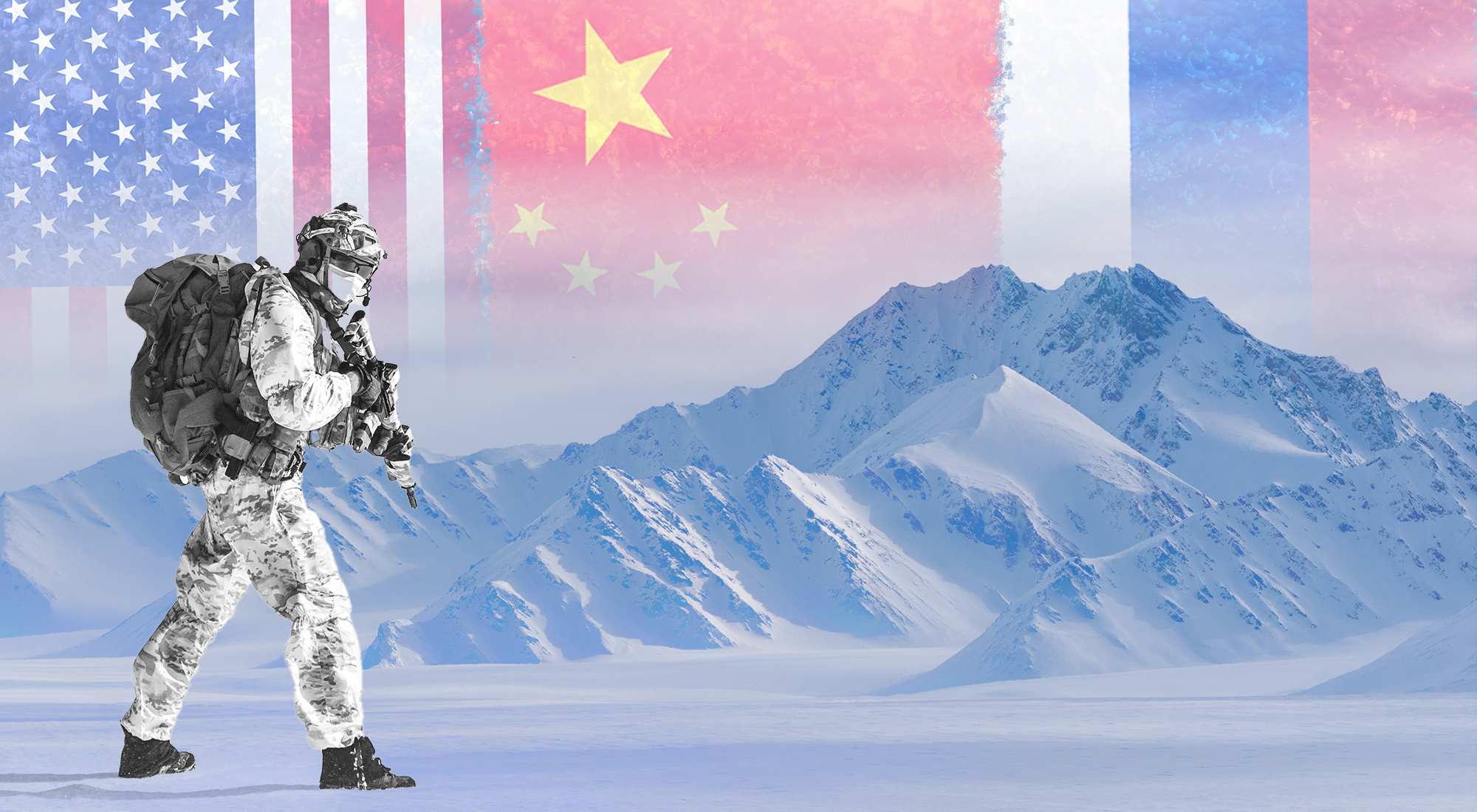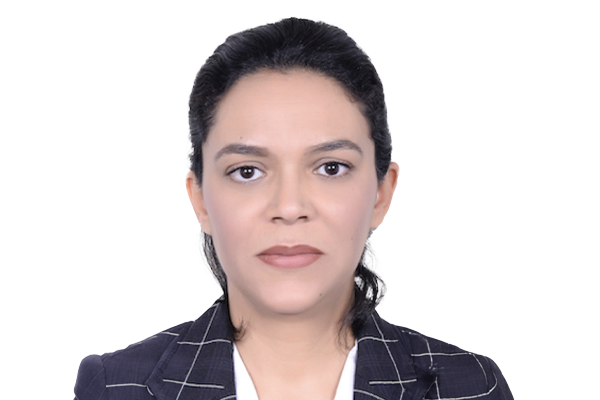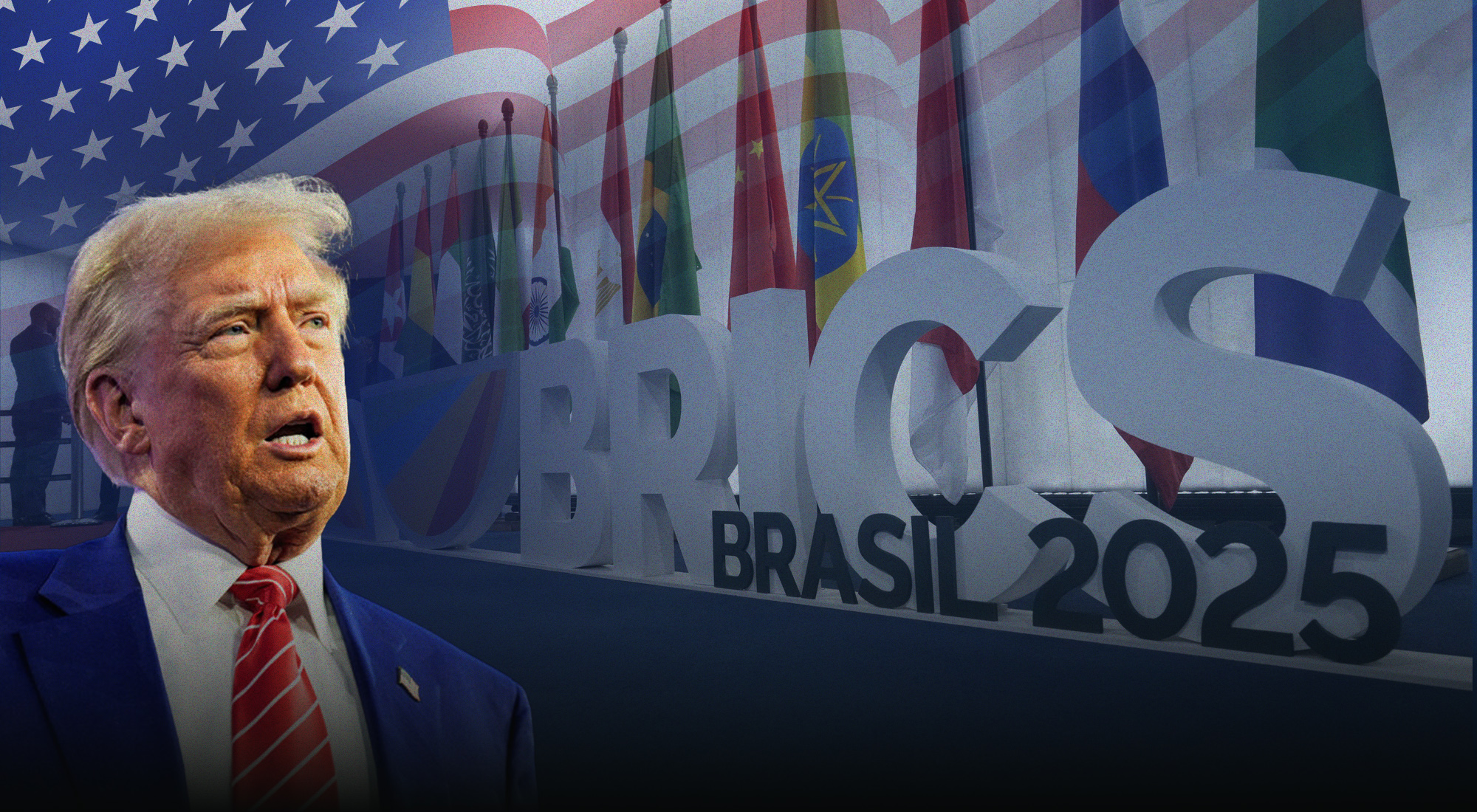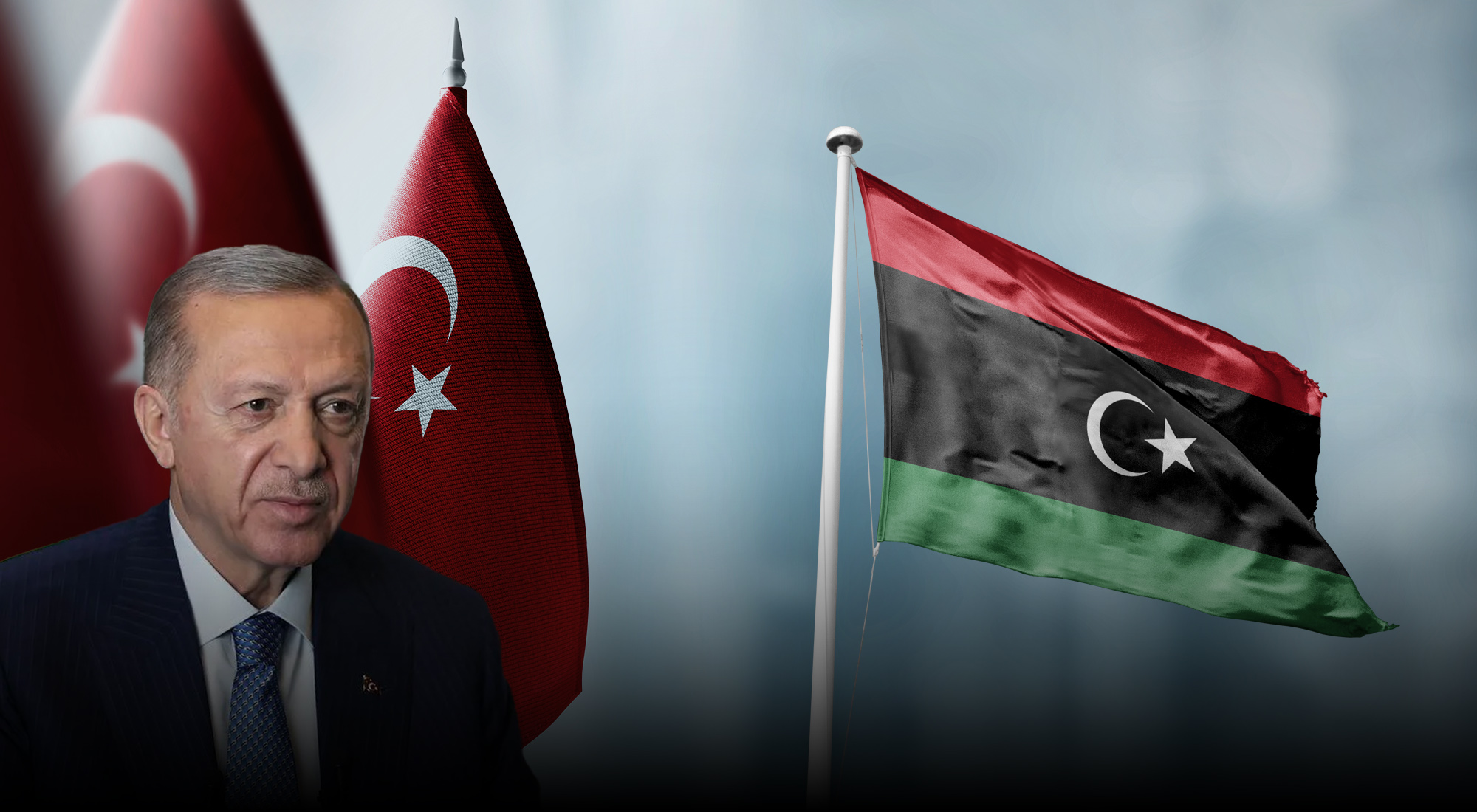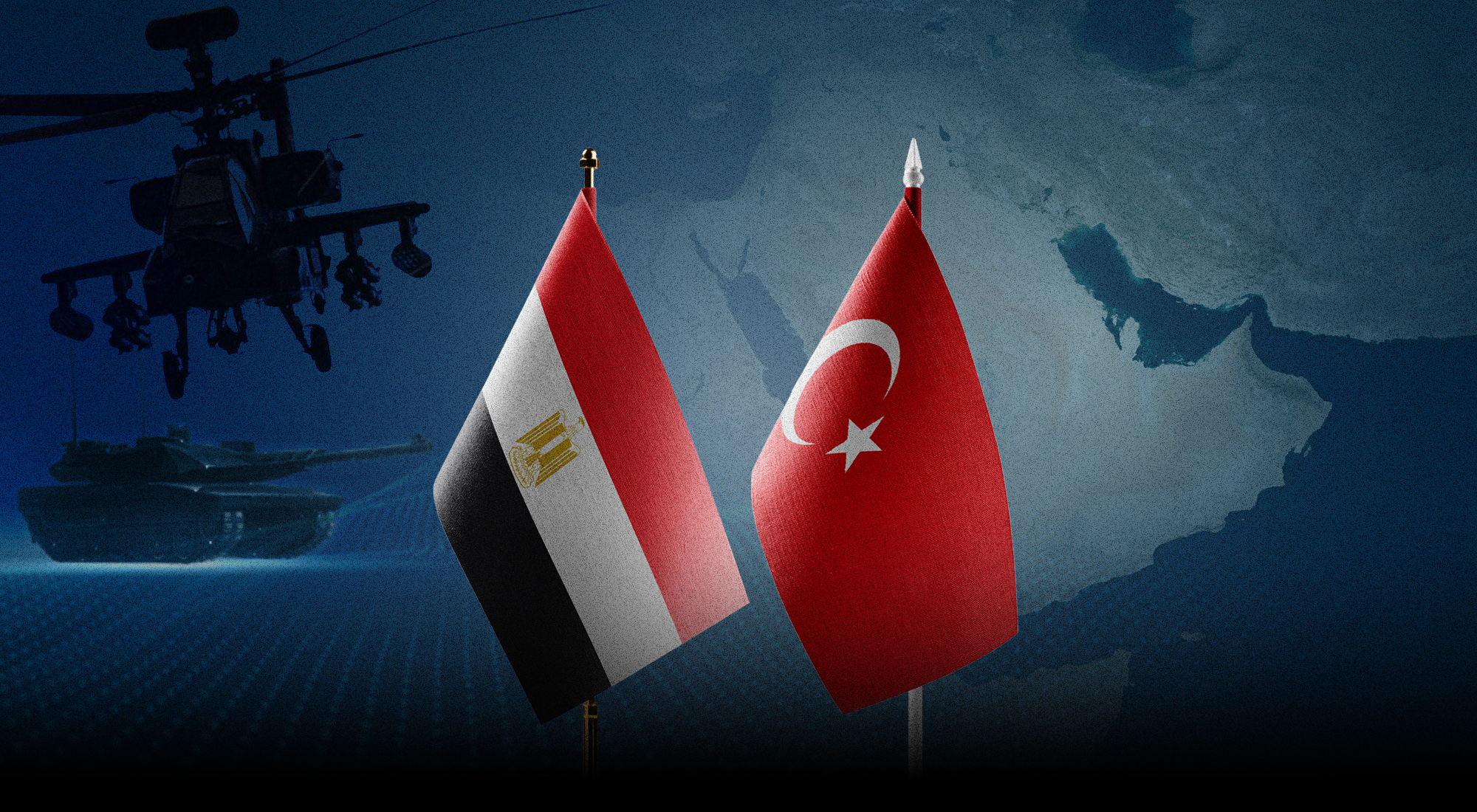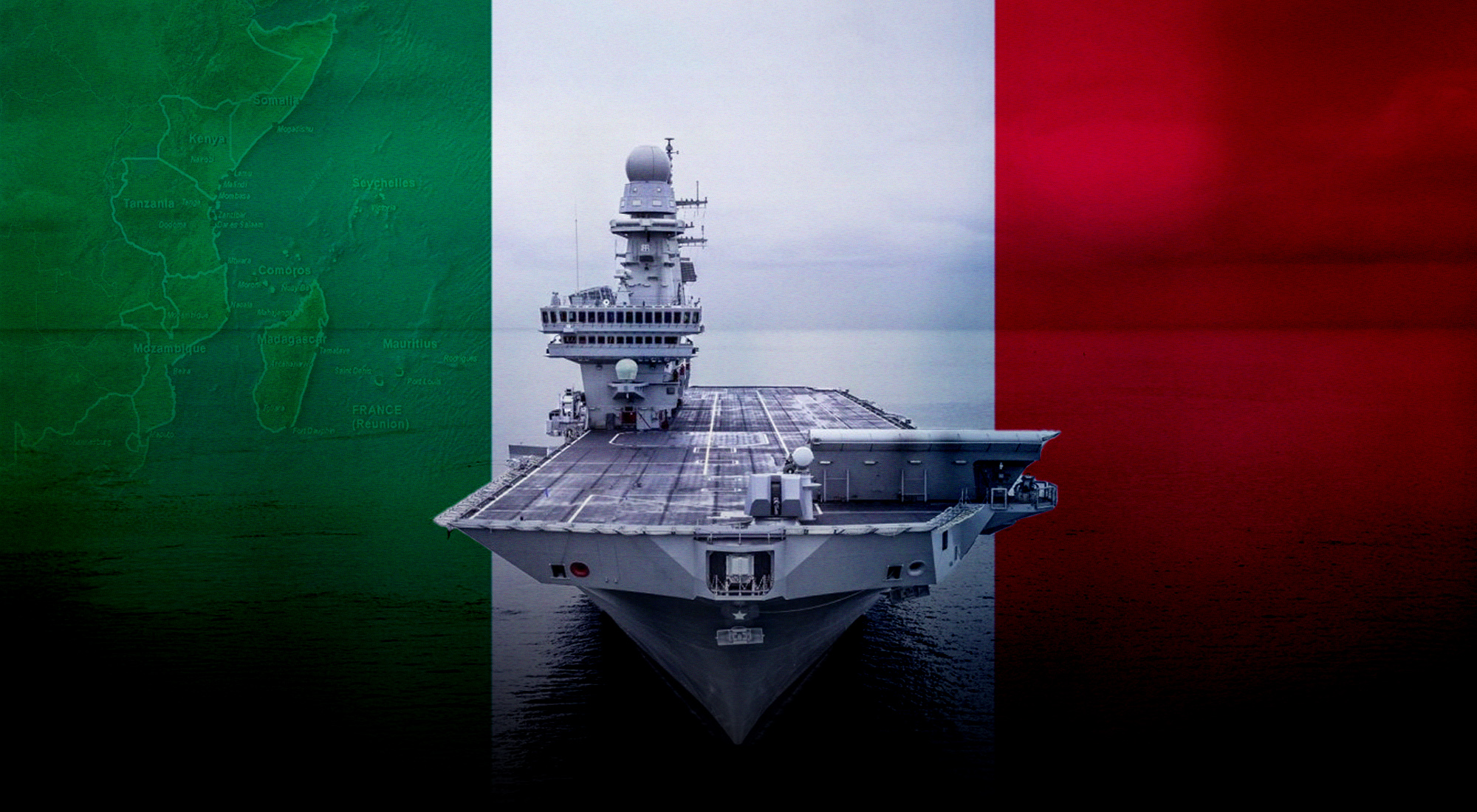The Arctic is rapidly emerging as one of the most geopolitically significant regions in the 21st century. Climate Change and the melting of the ice floes in the Arctic Ocean have presented new opportunities, which has generated the issue of managing the polar region among the major international powers. The Arctic is once again becoming a major strategic problem due to two factors. The first is global warming which accelerates the prospects for exploitation of natural resources and of transit through sea lanes that shorten distances and push the riparian states to assert their interests and sovereignty over these spaces. The second is the global strategic competition between the United States (U.S.) and its allies, Russia and China: it antagonizes relationships and exacerbates disputes hitherto managed through cooperation. The Arctic has been barreling toward conflict for a long time. As one of the only physical meeting points between three great powers (the U.S., Russia, and China) it could be argued that it was inevitable to become a geopolitical conflict zone, especially considering the long-standing conflicts between these three countries.
1. The geostrategic importance of the Arctic
Due to its crucial strategic location, the Arctic region has emerged since the Cold War as a key stage for global competition, which has increased the great power’s ambitions in the region. The issue of renewed international competition in the Arctic region raises a fundamental question about whether the region will reflect in the coming years images of international cooperation and a decrease in the pace of tensions, as it was during the post-Cold War period in the so-called “Arctic Spirit” era, which reflected rapprochement and coordination between countries. This is especially so since that cooperation led to the adoption of the Arctic Environmental Protection Strategy (AEPS) in 1991 and the establishment of the Arctic Council (AC) in 1996 to manage issues in the region. [1]
The polar regions are losing ice, and their oceans are changing rapidly. The consequences of this polar transition extend to the whole planet and are affecting people in multiple ways. A study by the Institute of Geological Studies in the U.S. reported that the Arctic region may contain approximately 13% of the world’s oil resources to be discovered, and 30% of global undiscovered gas resources. [2] Global warming also frees the waters of the Arctic region from the influence of ice every year, allowing gradually the opening of new maritime navigation routes, which may contribute to shortening the distance between Rotterdam and Yokohama by 40%, compared to the road that crosses the Suez Canal. [3] On the other hand, the northwest route, off the coast of Canada, would also significantly reduce the great distance between the Atlantic and Pacific oceans. To cooperate among the countries of the region, the Arctic Council was established in accordance with the Ottawa Declaration, which was signed in 1996 by Canada, Denmark, the U.S., Finland, Iceland, Norway, Russia, and Sweden. [4]
New fishing opportunities represent an economic resource for all Arctic and non-Arctic countries. For many years, thick ice has halted fishing or regional fisheries, and organizations have kept commercial fishing in Arctic waters to a minimum. But over the next thirty years, the Arctic will be crucial to reviving the Russian economy in fisheries. As for China, the Arctic will be a necessary source of energy, manufacturing, transportation, and diversifying food security. [5]
The route between Europe and Asia will become 40% shorter, resulting in additional economic and political interests on the part of not only the countries neighboring the Arctic directly but other European nations and China as well. The changes in the Arctic are at the same time creating new territories, already raising issues regarding sovereignty and thus military and security. Consequently, for several years now, the Munich Security Conference has been addressing the situation in that region. [6] Experts highlight the economic consequences of the rapid increase in temperatures, which sharpens commercial interests (development of mining resources, use of the “northern sea route”). Symbolically, in 2007, Russia planted its flag at the North Pole, which it claims before the competent United Nations (UN) commission as an extension of its continental shelf. [7]
For the U.S., the Arctic is of great importance. Alaska has many resources (fishing, fossil fuels, minerals) and American diplomacy is investing in climate issues. Russia intends to reconcile environmental protection and economic development, a strategy that is not self-evident; the exploitation of the “northern sea route” (NSR) increases the risk of ecological disasters, as does the melting of permafrost, which covers 65% of Russian territory. The Russian authorities have made the development of the Arctic a priority; they are investing considerable resources in industry and infrastructure, but they are increasingly concerned about the negative effects of global warming. According to a study in these regions, 40% of roads and buildings have already suffered damage, which led the Russian Ministry of Natural Resources to announce the establishment of a system for monitoring the evolution of permafrost. [8]
Russia’s attachment to economic security in the Arctic is particularly seen as reducing the risk of conflict in the region. The Russian Arctic’s contribution to the Russian GDP is at least prior to the Russian war against Ukraine estimated between 12% and 15% and accounts for approximately 20% of its exports, of which oil is 80% and gas 20% of its total production, and the prospects of considerably more export of oil and gas are equally unparalleled to any of the other Arctic states. In this perspective, the Russian militarization of the Russian Arctic is as much about protecting and supporting its economic activities as it is simultaneously a militarization to increase and bolster its forward posture. [9]
2. The growing militarization of the Arctic
In recent years, the Russian Federation has given the Arctic a priority on its domestic and foreign policy agendas. The country’s increased interest in the region has a deep historic root that extends all the way to the sixteenth century. Russia seeks to establish geopolitical superiority and tighten its grip on the Arctic, especially with climate change and the melting of ice, which may help it complete its infrastructure as raw materials and sea routes in the Arctic have become easier to develop, prompting Moscow to renovate and expand previously neglected Soviet military bases, deep-water ports and airfields in the Arctic. Russia’s Arctic strategy, the Russian Strategy of the Development of the Arctic Zone and the Provision of National Security, announced in 2013, includes a similar mix of security and economic priorities as the U.S. (U.S. Strategic Blueprint for the Arctic titled as “Blue Arctic”) [10] and Canadian strategies. It has three main priorities, namely security concerns, economic growth primarily in the energy sector and commercial use and control of the NSR shipping route. [11]
Since Russia’s war in Ukraine in February 2022, the Arctic region has been the subject of numerous economic sanctions from Western countries, particularly the European Union (EU). The consequences for the Russian economy are immediate, with the suspension of several hydrocarbon plant development projects, notably the Arctic LNG2 project. The withdrawal of European companies from the project and the interruption of the supply of technologies essential to its operation could affect the Kremlin’s ambitions in its development strategy for the Arctic region. The same goes for the construction of the fleet of ice-breaking LNG carriers, which was to accompany the commissioning of Arctic LNG2. However, President Vladimir Putin remains inflexible on his Arctic policy and pushes Russian industrialists to find and implement solutions to compensate for the defection of Western technologies. Russia’s absence from the Arctic Council, the escalation over security issues in the Arctic and the Kremlin’s desire to further secure the NSR suggest a renewed tension in this region, which has benefited so far from an exceptional level of cooperation. [12] The Russian North is also demonstrating the capabilities of influencing the Russian NSR and testing the capabilities of the U.S. Army in transporting forces from one region to another in the world as quickly as possible.
Russia’s intentions are clear, as it claims the continental shelf that it considers part of its territory. After the Ukrainian crisis, Russia did not back down or retreat in its attempt to impose control over its regions in the Arctic. Moscow views the Arctic as a strategic continuum stretching from the North Atlantic to the North Pacific. The Kremlin’s priorities are to impose costs on other countries’ access to Russia’s European Arctic; protect the NSR; defend North Pole approaches; remove tensions from the region; and extend Russia’s military capabilities beyond the Arctic Zone of the Russian Federation (AZRF). Europe may count on the Russian economic decline to weaken Russia’s position in negotiating the Arctic Ocean, or they may wait for the Ukraine problem to be resolved before embarking on any step or reaction regarding the presence of Russia in the Arctic Ocean region. [13]
China is a less visible player in the Arctic. Despite not being an Arctic nation but a self-proclaimed “near-Arctic state” with ambitious plans to establish itself as a “Polar Great Power” by 2035, [14] China has sought to play a greater role in Arctic affairs and has become one of thirteen observer countries in the Arctic Council since 2013, a body formed to manage regional cooperation. It owns a special research station in the Norwegian archipelago of Svalbard and is the largest foreign contributor to Russia’s projects. [15] China’s focus on becoming a polar great power represents a fundamental reorientation a completely new way of looking at the world.
In 2018, China issued a white paper entitled “Chinese Arctic Policy’ [16] to define its priorities in the region. It considers itself a “semi-Arctic” country and seeks to make the Arctic one of the regions through which it tries to build its influence and improve its image as a global power. This confirms the position of the Arctic as an inevitable strategic focus for global competition in the next stage.
Sino-Russian cooperation in the Arctic had no “ulterior motives,” but was a complementary approach that emphasized the participation of multiple parties, especially in the field of energy. Chinese companies have become shareholders and have important partnerships in energy and infrastructure projects in the Russian Arctic. The Chinese side is also working on the development and use of waterways, investigation and scientific research. Looking at the early results of Sino-Russian cooperation in the Arctic, the two sides were progressing according to economically oriented criteria, not linked to any projects of military activity. The cooperation between China and Russia in recent years added an intriguing complexity to Arctic geopolitics. Experts are divided on whether the warming of Sino-Russian relations is a true strategic alliance or merely a marriage of convenience. [17]
The implementation of the Yamal LNG project marked the beginning of technological cooperation in the Arctic between the two countries. It is worth noting that no state in the world, except the Russian Federation, has the competence to transport liquefied natural gas and oil in ice, including along the NSR. Cooperation between Russia and China in the energy sector can become a driver not only of technological development in the context of the implementation of joint energy projects but also contribute to significant socio-economic development of the Arctic territories, creating multiplier and complex-forming effects, and inducing domestic demand in related industries. [18]
Chinese military strategies deal with the Arctic as a region for future military competition. The “great power game” will “increasingly focus on the struggle over and control of global public spaces” (also known as “global commons”) such as the Arctic and Antarctica, and China argues that it “cannot rule out the possibility of the use of force” in this “coming scramble.” [19]
3. Implications for the U.S. and NATO response to the Russian expansion
Over the past decade, Russia has expanded and strengthened its military in the Arctic with a range of military bases, airfields, military installations and radars, as well as defensive and offensive weapons systems, in preparation for a battle that it sees as very close. With renewed competition between the great powers, NATO has become more focused on how to deter potential Russian wars against NATO countries, including the Arctic, especially with the outbreak of the Ukrainian war, and the possibilities of confrontation between NATO and Russia. As a result, Norway and its neighboring naval areas are once again receiving more attention in alliance planning.
Last July, the Pentagon issued an updated version of its Arctic strategy, setting plans for joint military exercises with its allies to demonstrate combat readiness and operational capabilities. The strategy also highlighted intentions to work with partners, local industries, and Alaska Native tribes to “enhance integrated deterrence and increase shared security” in the region. “The Arctic region of the U.S. is critical to the defense of our homeland, the protection of U.S. national sovereignty and the preservation of our defense treaty commitments,” Deputy Defense Secretary Kathleen Hicks said during a briefing at the Pentagon. “Our Arctic strategy will guide the department’s efforts to ensure that the Arctic remains a secure and stable region.” [20]
The U.S. Army’s recently released Arctic Strategy focuses on restoring Arctic dominance by building an Army capable of raising and deploying forces that are trained, equipped, and sustainable to fight, win, and survive in extreme cold weather and high-altitude conditions. The Air Force is also a major player in Arctic defense. This is through its multiple tasks, such as the Northern Warning System, which helps detect, track and share air and missile threats, as well as providing ground and space awareness. In addition to rapid response options in the region through fighter aircraft and refueling, the Air Force also operates the Arctic Weather Survival School and operates the only ski-equipped LC-130 aircraft in the U.S. Army inventory. [21]
The Navy released its Arctic Strategic Plan on 5 January 2021, during which it identified the challenges and opportunities existing in the region in the light of global competition. The plan also emphasized the need to strengthen the naval presence by integrating specific capabilities in the Navy and Marine Corps, enhancing cooperative partnerships with Arctic countries, and building a more capable Arctic Navy through modernization, training, and updated employment concepts, with the goal of improving homeland defense, promoting and preserving U.S. national interests in the region, and protecting sea lines of communication. [22]
Although NATO has historically lacked a formal position on the Arctic, after the start of the Ukraine War in 2022, the Arctic region has become a larger security focus for the alliance. With the rise of Finland and Sweden into NATO, the Alliance’s presence in the Arctic has increased significantly and has been accompanied by large-scale military exercises, such as Northern Response 2024, the largest NATO exercise in decades, which involved 13 NATO countries and 20,000 troops. The recent “24-Arctic Edge” maneuvers conducted by some NATO units in the Arctic region intensified the tension resulting from the accession of Finland and Sweden to the alliance, with the practical aim of strengthening the American military presence and practical development of the activity of the alliance’s intelligence services facing the coast.[23]
The Arctic region will be one of the most important and most dangerous potential conflict hotspots in the 21st century. It is also expected, according to Russian sources, that the accession of Finland and Sweden to NATO will be a burden and a source of trouble for each of them in exchange for benefits of questionable content and feasibility, while this accession will be a reason for the U.S. to strengthen its positions in the Arctic region.
4. Diplomatic efforts and international governance
Due to the soft power strategy, Arctic governance has created the Arctic Council as a model of inclusiveness and high-level intergovernmental forum, where science diplomacy has played a pivotal role in promoting cooperation, coordination, and interaction among circumpolar states on issues of common concern, including those relating to sustainable development and environmental protection. The council brings together the eight Arctic member states, organizations representing the region’s native peoples, and several observer states and organizations, including China. [24] The Arctic Council was officially established in 1996 under the terms of the Ottawa Declaration, whose signatories were Canada, Denmark (including Greenland and the Faroe Islands), the U.S., Finland, Iceland, Norway, Russia and Sweden. It cannot deal with military and sovereignty issues (which are excluded from its field of competence) to concentrate discussions on subjects that can more easily be the subject of consensus such as scientific cooperation, environmental protection, well-being and economic development of indigenous populations, safety of navigation, etc. Much of the Arctic Council’s work focuses on scientific and technical topics that are studied in thematic working groups. [25]
Outside the Arctic Council, there are a multitude of official organizations, governmental and non-governmental, whose purpose is to manage various issues in the Arctic; The Arctic Circle is an organization established by Iceland on 15 April 2013. Its mission is to facilitate dialogue between political leaders, business leaders, environmental experts, scientists, indigenous representatives and other international stakeholders on issues related to the Arctic. The four Arctic states located in Europe (Denmark, Finland, Norway and Sweden) and Iceland, which has strong historical ties to Europe, are known as the “Nordic countries”. Much of the cooperation between these states relates to issues they have in common with Western Russia, the Baltic and Barents Sea regions and the greater Nordic region, including international waters. In addition to those organizations, six other organizations representing Indigenous peoples of the Arctic have permanent participant status. [26]
There are also non-Arctic countries that have been granted observer status, such as Germany, the UK, the Netherlands, Poland, France, Spain, Italy, Japan, China, India, South Korea, Singapore, and Switzerland. This is in addition to many other international organizations such as the UN through some of its programs related to environment and development. European and Asian countries have shown their interests and responsibilities in a strategy document on the Arctic. The EU adopted an integrated policy on the Arctic zone in 2016 and is currently considering updating these guidelines. Asian states’ ongoing research agendas and scientific cooperation have made their engagement crucial for the development of Arctic knowledge. Japan and South Korea launched the construction of an icebreaker for scientific purposes, to be deployed in 2026. [27]
There is no doubt that the war in Ukraine has made cooperation and diplomacy in the Arctic more difficult. However, the U.S. can expect Russia to remain open to peaceful discussions. Even at the height of the Cold War, the Soviet Union cooperated with the West on Arctic issues, including initiatives such as the 1973 Convention on the Conservation of Polar Bears [28] and the 1987 Murmansk Initiative toward regional cooperation, recognizing the special responsibilities and special interests of the States of the Arctic Region in relation to the protection of the fauna and flora of the Arctic Region and recognizing that the polar bear is a significant resource of the Arctic Region that requires additional protection.
To manage the escalating tensions in the Arctic, states must strike a balance between cooperation and strategic rivalry through bilateral and international diplomacy. Important Arctic nations like the U.S. and Russia hold bilateral discussions to lower the likelihood of armed conflict, frequently concentrating on keeping lines of communication open about security-related issues. Despite the modest progress made in these discussions, they are nonetheless crucial for defusing any confrontations considering the Arctic’s growing militarization. Security matters are noticeably missing from multilateral institutions like the Arctic Council, which offers all Arctic nations a diplomatic forum to debate environmental, economic, and indigenous issues.
Despite the current high tensions and given the potential for mutual destruction, Russia and NATO share an interest in maintaining peace in the Arctic region in addition to diplomatic frameworks that provide legal channels for settling competing claims to seabed resources, such as the United Nations Convention on the Law of the Sea (UNCLOS). [29] NATO’s attempts to coordinate security plans among its Arctic member states, strengthening regional stability, are another example of multilateral diplomacy in action. Although these diplomatic efforts aid in the management of tensions, they frequently fail to address the more serious security threats brought on by military buildups and geopolitical rivalry in the Arctic. [30]
Conclusion
With rivalry for resources, vital shipping lanes, and military supremacy driving war, the Arctic is quickly changing into a disputed geopolitical region. Global powers like China, the U.S., and Russia are vying for control of the region because of the melting ice, which has made it more accessible for economic exploitation. Territorial claims overlap when states bolster their military presence, raising the possibility of error or conflict. The Arctic runs the risk of turning into a hot spot for future hostilities in the absence of defined methods to handle these tensions.
There is an urgent need for more international collaboration to stop this escalation. Although the UNCLOS and the Arctic Council have facilitated communication, they are ill-equipped to handle the region’s growing security concerns. Redoubled efforts should concentrate on broadening diplomatic channels to cover security and military matters, setting up a platform for Arctic countries to discuss weapons control and developing guidelines for military behavior. The moment has come for Arctic countries to engage in formalized diplomatic discussion that covers military and security matters. Whether through a distinct treaty or the Arctic Council, a new global security framework might offer a forum for controlling the military buildup, negotiating arms control measures, and defining explicit rules of engagement to avoid unintentional conflicts. In addition to lowering the likelihood of violence, this would establish a crisis management system in the Arctic. International organizations must also mediate conflicts and make sure that competition in the Arctic doesn’t jeopardize indigenous rights or the sustainability of the environment. In the face of mounting global pressure, the Arctic can only continue to be a region of harmony, collaboration, and shared wealth via concerted effort.
References
[1] Stefan Kirchner and Federica Cristani, “International Disaster Risk Reduction and Response Law Made in the Arctic,” Yearbook of International Disaster Law Online 4, no. 1, (2023): 21-50. https://doi.org/10.1163/26662531_00401_004.
[2] “IPCC, 2019: Summary for Policymakers, in IPCC Special Report on the Ocean and Cryosphere in a Changing Climate [H.-O. Pörtner, D.C. Roberts, V. Masson-Delmotte, P. Zhai, M. Tignor, E. Poloczanska, K. Mintenbeck, A. Alegría, M. Nicolai, A. Okem, J. Petzold, B. Rama, N.M. Weyer (eds.)]. In press., https://www.ipcc.ch/site/assets/uploads/sites/3/2019/12/SROCC_FullReport_FINAL.pdf.
[3] Olivier Faury, Pierre Cariou, “The Northern Sea Route competitiveness for oil tankers,” Transportation Research Part A: Policy and Practice 94 (2016): pp. 461-469, https://doi.org/10.1016/j.tra.2016.09.026.
[4] IPCC, 2019: Summary for Policymakers. In: IPCC Special Report on the Ocean and Cryosphere in a Changing Climate [H.-O. Pörtner, D.C. Roberts, V. Masson-Delmotte, P. Zhai, M. Tignor, E. Poloczanska, K. Mintenbeck, A. Alegría, M. Nicolai, A. Okem, J. Petzold, B. Rama, N.M. Weyer (eds.)]. In press. https://www.ipcc.ch/site/assets/uploads/sites/3/2019/12/SROCC_FullReport_FINAL.pdf.
[5] THE U.S. ARMY IN THE ARCTIC Headquarters, Department of the Army, “REGAINING ARCTIC DOMINANCE,” 2021, https://www.army.mil/e2/downloads/rv7/about/2021_army_arctic_strategy.pdf.
[6] Arne Lietz, ”The scramble for the Arctic,” IPS-Journal, December 27, 2019, https://www.ips-journal.eu/regions/global/the-scramble-for-the-arctic-3966/.
[7] Bernard Chappedelaine, “L’Arctique – zone de conflit ou espace de coopération? Revenue de Presse Internationale #17,” Institut Montaigne, June 1, 2021,.https://www.institutmontaigne.org/expressions/revue-de-presse-internationale-17-larctique-zone-de-conflit-ou-espace-de-cooperation
[8] Olga Dobrovidova, “Russia begins work on national permafrost monitoring system,” Science.org. 375 no. 6576 (January 7, 2022), https://www.science.org/doi/pdf/10.1126/science.acz9933
[9] Nivedita Kapoor, “Russia and the Future of the Arctic,” ORF Occasional Paper No. 336 (October 28, 2021), https://www.orfonline.org/research/russia-and-the-future-of-the-arctic.
[10] Department of the Navy, A strategic Blueprint for the Arctic, “A Blue Arctic”, January 5, 2021 https://media.defense.gov/2021/Jan/05/2002560338/-1/-1/0/ARCTIC%20BLUEPRINT%202021-%20FINAL.PDF/ARCTIC%20BLUEPRINT%202021%20FINAL.PDF
[11] KLIMENKO, EKATERINA, “Russia’s Arctic strategy: ambitions and constraints,” In Russia’s Evolving Arctic Strategy: Drivers, Challenges and New Opportunities, Stockholm International Peace Research Institute, (2014): 3–15, http://www.jstor.org/stable/resrep19182.7.
[12] U.S Department of State, “Further Sanctions to Degrade Russia’s Ability to Operationalize the Arctic LNG 2 Project,” September 5, 2024, https://www.state.gov/further-sanctions-to-degrade-russias-ability-to-operationalize-the-arctic-lng-2-project/.
[13] Gabija Leclerc, ”Russia’s war on Ukraine: Implications for the Arctic,” European Parliamentary Research Service, January 2024, https://www.europarl.europa.eu/RegData/etudes/BRIE/2024/754604/EPRS_BRI(2024)754604_EN.pdf.
[14] Matti Puranen and Sanna Kopra, “China’s Arctic Strategy – a Comprehensive Approach in Times of Great Power Rivalry,” Scandinavian Journal of Military Studies 6 no. 1 (2023): Page/Article: 239–253, DOI: 10.31374/sjms.196.
[15] Ling Guo and Steven Lloyd Wilson, “China Russia and Arctic geopolitics,” The Diplomat, March 29, 2020, https://thediplomat.com/2020/03/china-russia-and-arctic-geopolitics/
[16] xinhuanet, “China’s Arctic Policy,” The State Council Information Office of the People’s Republic of China, January 26, 2018, http://www.xinhuanet.com/english/2018-01/26/c_136926498.htm.
[17] Anne-Marie Brady A-M, “The Rise of a New Polar Power,” In: China as a Polar Great Power. (Cambridge University Press, 2017): pp. 1-15.
[18] Zaikov K.S., Spiridonov A.A. and Fadeev A.M, “Cooperation between Russia and China in the Arctic Energy Sector: A Strategic Perspective,” Arktika i Sever [Arctic and North] no. 54 (2024): pp. 22–37. https://doi.org/10.37482/issn2221-2698.2024.54.22.
[19] Rush Doshi, Alexis Dale-Huang and Gaoqi Zhang, “Northern expedition: China’s Arctic activities and ambitions,” Brookings, (April 2021), https://www.brookings.edu/articles/northern-expedition-chinas-arctic-activities-and-ambitions/
[20] C. Todd Lopez, “New DOD Strategy Calls for Enhancements, Engagements, Exercises in Arctic,” U.S. Department of Defense, July 22, 2024, https://www.defense.gov/News/News-Stories/Article/article/3846323.
[21] U.S. Army Public Affairs. “Army announces release of Arctic Strategy,” March 16, 2021, https://www.army.mil/article/244261/army_announces_release_of_arctic_strategy
[22] Ibid.
[23] “ARCTIC EDGE 24: MARINES CONDUCT COLD WEATHER TRAINING EXERCISE,” Marines. The official website of the United States Marine Corps, March 13, 2024, https://www.marines.mil/News/Marines-TV/videoid/915780/dvpTag/Arctic/.
[24] Argüello G, Rafaly V., “Science diplomacy and Asian states: Transforming the governance landscape in the Arctic,” Polar Record 59: e41 (2023): https://doi.org/10.1017/S0032247423000281.
[25] Ibid.
[26] Thai Nguyen, Tim Williams, “The Arctic: Organizations Involved in Circumpolar Cooperation,” Parliament of Canada, Publication No. 2008-15-E, August 1, 2012, https://lop.parl.ca/sites/PublicWebsite/default/en_CA/ResearchPublications/200815E.
[27] “ARCTIC COUNCIL OBSERVERS. List of Arctic Council Observers,” Arctic Council, https://arctic-council.org/about/observers/.
[28] “The 1973 Agreement on the Conservation of Polar Bears,” Polar Bear Range States, June 20, 2017, https://polarbearagreement.org/resources/agreement/the-1973-agreement-on-the-conservation-of-polar-bears.
[29] United Nations Convention on the Law of the Sea Agreement, https://www.un.org/depts/los/convention_agreements/texts/unclos/unclos_e.pdf.
[30] Gry Thomasen, Chiara Cervasio and Mhairi McClafferty, “Arctic Diplomacy at a Crossroads: Addressing Present and Future Geopolitical and Strategic Risk,” The British American Security Information Council, 2023, https://basicint.org/wp-content/uploads/2024/01/Arctic-Diplomacy-at-a-Crossroads-FINAL.pdf.



